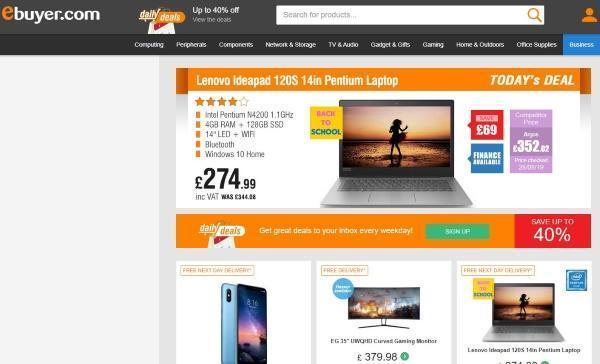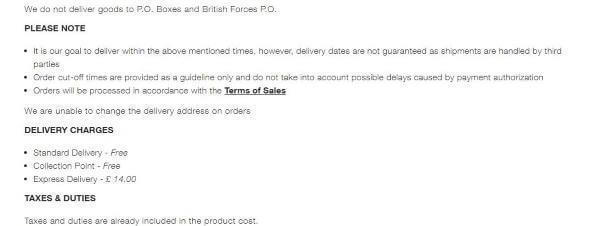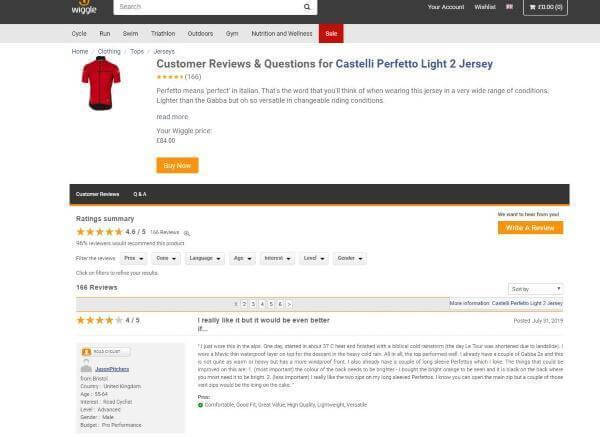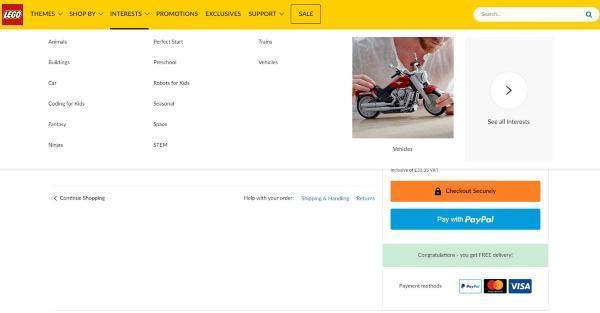It has never been easier to set up your own eCommerce store.
Shopify, BigCommerce, WooCommerce , Magento, Wix and others have all lowered the barrier to entry and make it as easy as possible to sell online.
Once your store is live, you can use onsite SEO, outreach, PPC and other techniques to attract traffic.
It’s a slow, laborious process but it does work.
What then?
What do you do once you begin attracting traffic in significant numbers? How do you turn those visitors into paying customers?
That’s when you need to turn to conversion.
What is CRO and what is a normal conversion rate?
CRO standard for Conversion Rate Optimization.
It’s the practice of turning those visitors into paying customers on your store.
Visitor numbers are all very well but unless they buy something, they are of no real use to you.
It’s only when they buy, or perform another desired action like sign up for a newsletter, subscribe to a podcast or other interaction that they become useful.
Typical conversions in an eCommerce store aren’t just purchases, they can also be:
- Adding a product to a cart.
- Adding a product to their wishlist.
- Signing up for email alerts or newsletters.
- Sharing or interacting with your social media channels.
- Anything else you might measure.
Purchases are obviously your target but any of those interactions can add value to your store.
Adding an item to a wishlist can prompt the visitor to a later purchase.
Signing up for a newsletter keeps you in their consciousness.
Sharing your store or a product on their social media or interacting with you on yours is also good publicity.
All these things can add value even if they don’t directly result in a sale.
Your CRO is a simple calculation of the visitors you receive divided by the number of interactions you get.
Let’s take orders as a conversion metric. If you have 10,000 visitors per month and receive 100 orders, your conversion rate is 1%. 10,000 / 100 = 1.
If you measure other metrics, the same calculation applies.
What is a normal conversion rate?
According to Smart Insights , the normal conversion rate for an eCommerce store is between 1.5% and 4.4%.
There is huge variation between sectors, countries and even devices used but a reasonable average conversion you can expect is between 1.5% and 4.4%.
That doesn’t mean you have to settle for that rate. Even a modest increase of .5% or 1% can mean a significant jump in revenue.
That’s where CRO comes into its own.
It is much, much easier, and cheaper to improve conversion than it is to convert traffic.
Plus, if you’re getting significant traffic to your store anyway, it makes more sense to turn those into customers than try to attract more who ‘might’ turn into customers.
7 E-commerce CRO Techniques
The following CRO techniques are all actionable and all work.
There is no such thing as guaranteed improvement in retail but each of these techniques should help boost your CRO even marginally.
If that helps convert without impacting revenue, that has to be a good thing right?
Most of these techniques work well with any e-commerce, but if you’re still not sure about which platform to choose, the following article can help you decide between WooCommerce vs Shopify .
Once you’ve made your choice of platform, it’s time to get cracking with CRO optimization!

1. Use Scarcity to Create A Sense of Urgency
FOMO for the win.
Fear Of Missing Out is a powerful motivator and is something marketers can use to their own end.
Part of FOMO is called Loss Aversion which is a psychological principle that says the fear of losing something is twice as powerful as the pleasure of winning.
We can use this in CRO to encourage FOMO in visitors in the hope of prompting them to convert.
Time-limited offers are a classic trick that leverages FOMO.
The idea that we have a limited amount of time to complete a purchase before we miss out on the discount/special offer/reduced rate/free shipping or whatever can instigate that purchase decision for our own gain.
Other tricks to prompt FOMO is the limited stock availability alert or end of line alert.
Anything that makes the visitor think they have a finite opportunity and could miss out if they don’t take it will convert.
E-buyer is a good example of using time limited offers to create urgency. Their Daily Deals section is very popular and makes sure you know time is limited.

2. Free Shipping Works Wonders
Our view of paying for shipping is a curious one.
We will gladly pay more for a product elsewhere if the site we are on charges shipping. Even if we know that the total cost is less on one store, we will still often buy from the other if it offers free shipping.
This is about more than cost and partially about our expectation of online retail and perception of goodwill from the retailer.
If a retailer offers free shipping, we perceive that the retailer values us as a customer. It shows goodwill, which is a powerful emotional trigger.
So much so that even if you charge more for the product to cover the shipping cost, you will still improve overall conversions as long as your markup remains competitive.
Having to choose shipping at the checkout is a significant roadblock to completion. Offering free shipping is a way to avoid that. Order, buy, confirm, complete. Short, simple and nothing to get in the way.
The North Face is one of many retailers that offer free shipping to most places in the world . They don’t make a big deal about it either.

3. Implement cart recovery processes
Using a cart recovery process can help salvage abandonment partway through the sales process.
Cart abandonment is very common, with around 68-70% of all shopping carts being abandoned across the board.
Retrieving even a small number of those through CRO could improve your revenue significantly.
There are a myriad of reasons why carts are abandoned and it is impossible to address every one of them. Instead, you can use simple methods to try to claw back the sale.
Those methods include retargeting ads, email marketing and exit popups.
Retargeting ads will be shown to the visitor when they visit other websites to remind them of your products.
Email marketing can be configured to mention the items they almost bought and provide a link to try again.
Exit popups will pop up a prompt to try to get the customer to stay. These are more controversial as not many people like popups, however they can work.
Using one or all of these could help improve cart recovery and contribute to a lower abandonment rate.
Vans shoes has a popup reminder that reminds you of the product you added to your card but also shows something similar.
It’s a neat way to recover carts without being annoying.

4. Live chat is essential
Being responsive has always been a core facet of retail.
Having someone to ask right away can make all the difference to a purchase.
How many times have you left a store without buying something because there was no assistant around to help?
The same principle applies to eCommerce and live chat is your way to address that.
There are a number of live chat apps or plugins you can use on your eCommerce store depending on what platform you use.
Offering live chat is one thing, always being available to answer queries is something else.
Some live chat apps use bots to answer common questions while others can be sent to call centers instead of coming to you.
Whatever option you choose, having the potential for an instant answer to a purchase question will definitely have a positive effect on your CRO.
Le Creusert has an excellent live chat app that sits quietly in the corner until you need it and then springs into action with an agent answering questions.

5. Testimonials around the problem your product solves
Testimonials form part of social proof and we all know from our own experiences how effective that is.
How many times do you read reviews or seller feedback during a purchasing decision?
I do it all the time, even for small ticket items.
It’s now a fundamental part of eCommerce and you need to leverage it to improve CRO.
Social proof gives essential reassurance to new customers or customers who haven’t tried your produce or service before.
If they see other people just like them have enjoyed the purchase and the purchase has delivered on its promises, they are much more likely to convert.
Negative feedback can also work in your favor. Issues with a product that was professionally handled in a timely manner will also convert.
Wiggle is the perfect example of how integrating testimonials helps with conversion.

6. Allow guest checkout
Online stores that don’t allow guest checkouts are a personal bugbear of mine.
I don’t mind registering at stores I will use regularly but for occasional purchases, it should not be necessary.
Enabling guest purchases is another way to shorten and sweeten the customer journey.
It’s our own fault really.
People are so fed up with being asked for their email or personal details on websites only to be bombarded with ads, emails and junk that everyone is suspicious of having to provide it.
Plus, entering all those details takes time and effort, both a roadblock to conversion.
The fewer roadblocks there are, the higher the conversion rate.
Using guest checkout with PayPal or other payment provider offers a fast, seamless path to purchase that helps convert.
The Lego website is a great example of how checkout is a simple three click process that includes guest checkout.

7. Use Unique long-form descriptions for better SEO
Writing your own, detailed product description has three main benefits.
It performs much better for SEO, which helps contribute to more traffic.
It enables you to compose your own description in a way that matches your brand voice and it shows you’re not a lazy retailer.
All contribute to higher conversion.
Original product descriptions will always benefit SEO. Implementing longtail keyword terms helps in search as well as SERPs and is a no-brainer.
Matching your own brand voice is a minor benefit but helps with the overall look and feel of the experience.
If you have a particular tone or nomenclature, this is your opportunity to make the product yours.
Knowing the store you’re on copied and pasted the product description from the manufacturer never gives a good impression.
We may be in the realm of marginal gains here but every little helps!
Amazon are an excellent example of long descriptions in use.
The standard product descriptions are often long and detailed and include several breakout boxes with different data points.
Wrapping Up
Each of these 7 CRO techniques work for eCommerce.
Some of the biggest names in retail use them to great effect and it would do your own store no harm at all to emulate their methods.
If you’re drawing traffic to your store already, it really does make sense to make some minor improvements to your store to engage better, reduce abandoned carts and do all you can to entice that buying decision.
If you can do all that without annoying the visitor, without costing yourself revenue and by using well-known tools and tactics, it has to be worth trying, right?